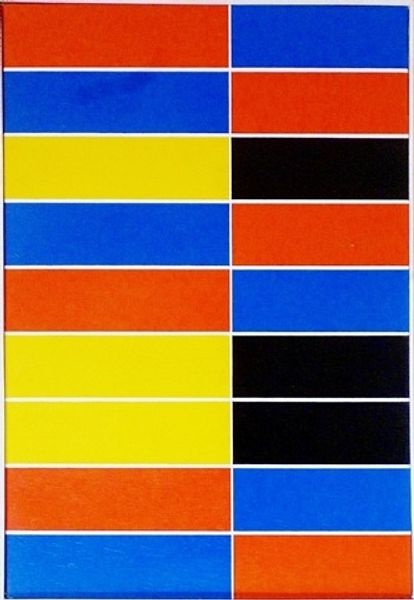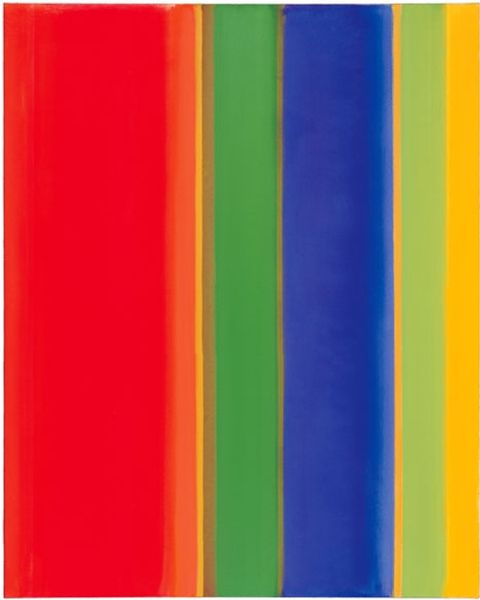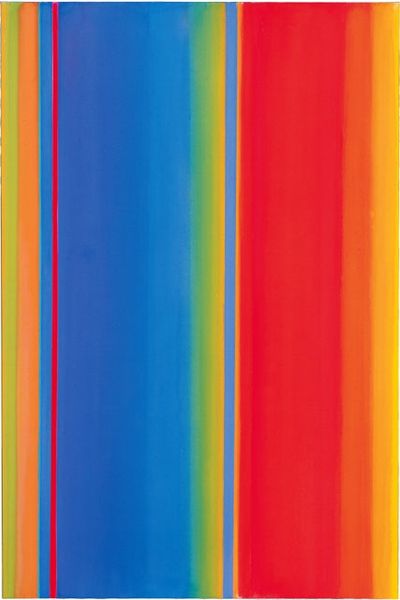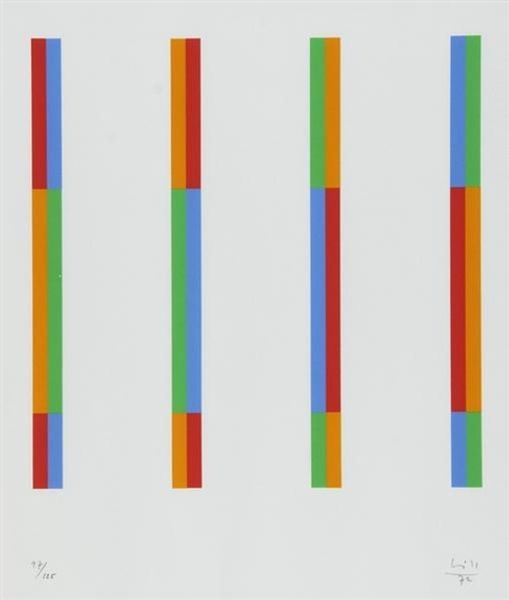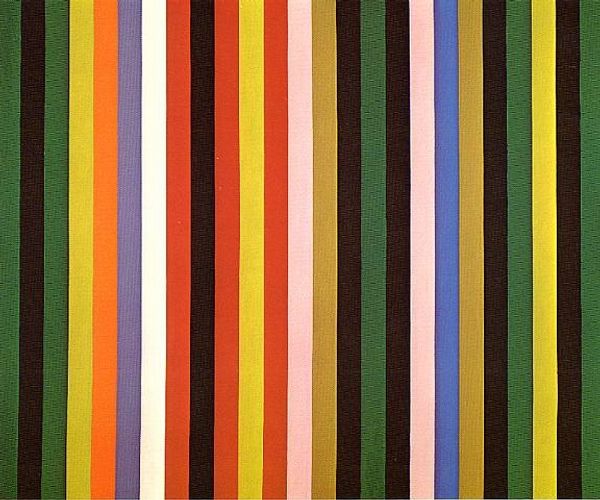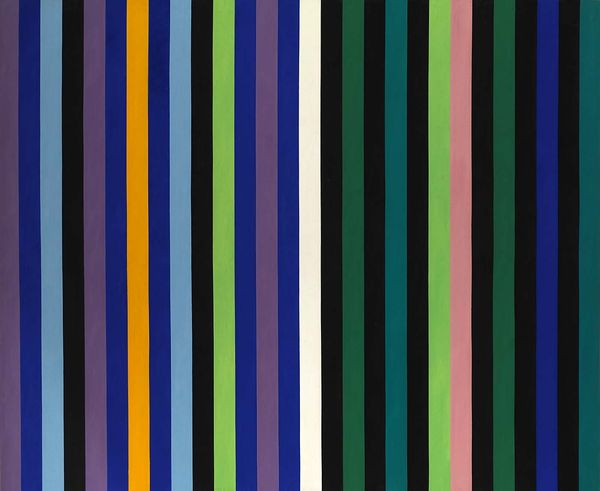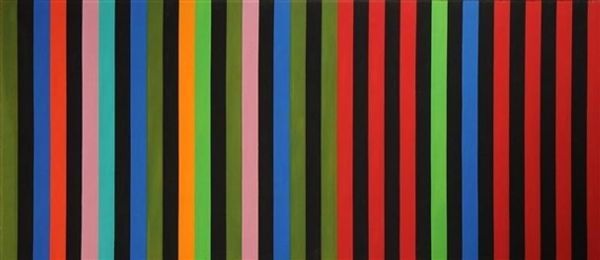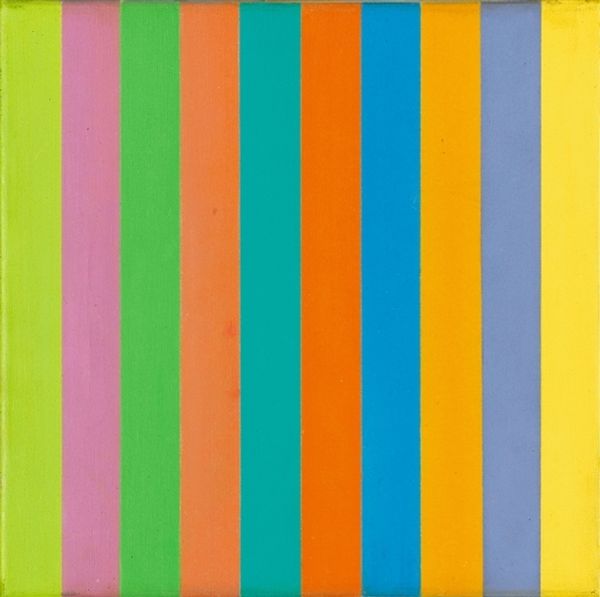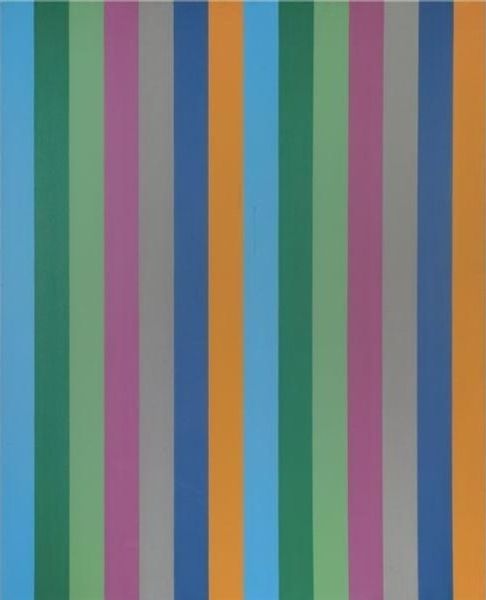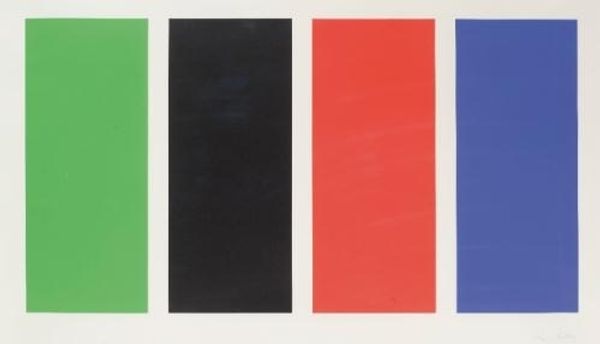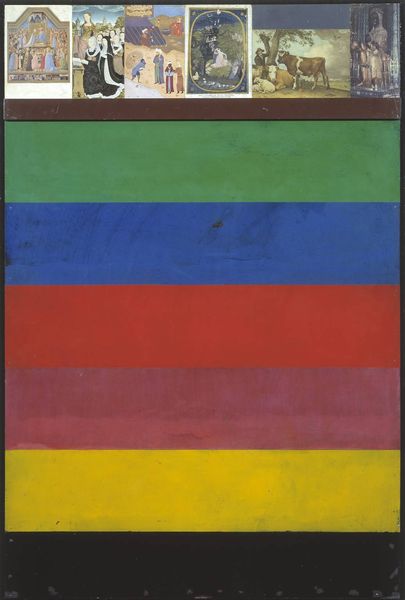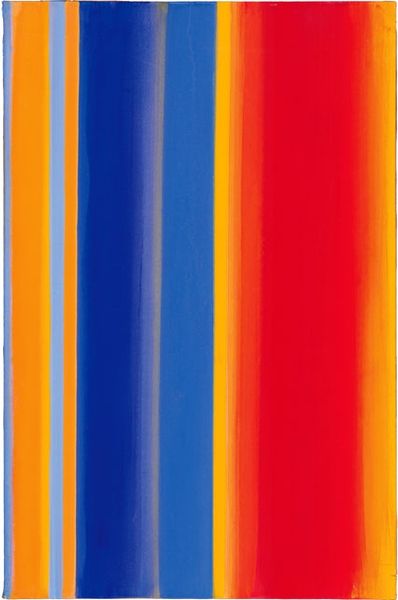
Copyright: Antonio Palolo,Fair Use
Curator: Look at "Lisbon" from 1973 by Antonio Palolo. At first sight, I'm struck by its cool, almost clinical use of color. The stark vertical lines encased in white really create a distinct formal tension, wouldn't you say? Editor: Yes, the immediate sensation is a rhythmic visual exercise. But I see more here than just geometric play. Given the title "Lisbon," and Palolo's context as a Portuguese artist in the 70s, I’m immediately thinking about urban landscapes and the socio-political climate under the Estado Novo regime. Curator: Ah, you’re suggesting the regularity speaks to imposed order, the "grid" as a symbol of control. That's a reading that pulls the artwork from its pure formalism into something much more critical and situated. Do you see this control in the construction? Editor: Definitely. The application of acrylic paint allows for these smooth, almost mass-produced-looking surfaces. Palolo's rejection of texture signals, to me, a certain awareness, perhaps even a subtle critique, of industrialization's effect on the urban and social fabric. Also, is the usage of colors coded here with respect to political parties of the time, since red and green have meanings during the Salazar dictatorship. Curator: Interesting… To go back to the lines: white here, creates strong demarcation, a structural skeleton, if you like, almost brutally dissecting the composition and the background; as such, they also function as highlights that, at least aesthetically speaking, serve as visual separation of colors in terms of chromatic impact. I'd also emphasize how each vertical line sits within a blue ground: a smaller geometrical figure superimposed on another larger one. It could represent spatial constraints with an artificial atmosphere Editor: Yes! The contrast, plus that division between vertical fields above the ground, creates a strong division which, thinking in terms of consumption and the commercial production of art, speaks of reproducibility. These flat fields feel less "artistic" and closer to manufactured goods that, in the time the painting was created, the Portuguese society didn't have so much access to, so this composition can also reveal a socioeconomic statement. Curator: Okay, you have given me a lot to think about in regards of what this work reflects back, regarding society! Thanks for this conversation that went far beyond form! Editor: My pleasure! Seeing art is also about understanding that nothing exists in a vacuum, isn't it?
Comments
No comments
Be the first to comment and join the conversation on the ultimate creative platform.
